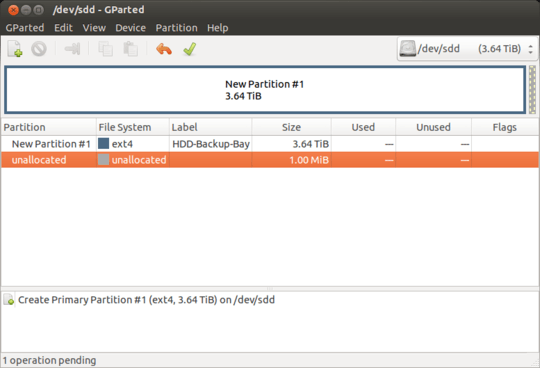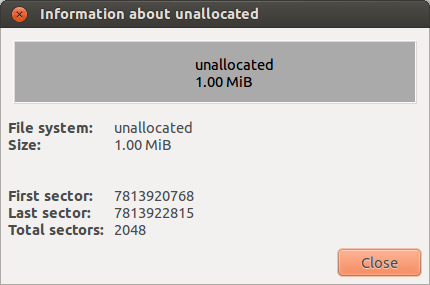4
Every so often I encounter a small unallocated space in the partitioning scheme of a hard drive, when I want to create a maximal sized partition, even though I have set the "Free space following" to zero in the partitioning dialogue. (see first picture below.)
Of what use this free space of 2048 sectors? The chosen partition table is GPT. Is this small space meant for the MBR equivalent of GPT? If so, why is it at the end of space, should it not be at the beginning of the HDD?



2It is because 3.815.391 isn't evenly divisible by 2048 leaving you with roughly 1MIB of unused space... – TheXed – 2013-10-22T16:54:10.980
Could you go into some more detail? Why do I have to divide by 2048? Newer hard drives use 4096 byte (4 kB) sectors. Is the problem, that I have chosen an alignment of megabytes not sectors?
– Senkaku – 2013-10-22T17:01:07.573